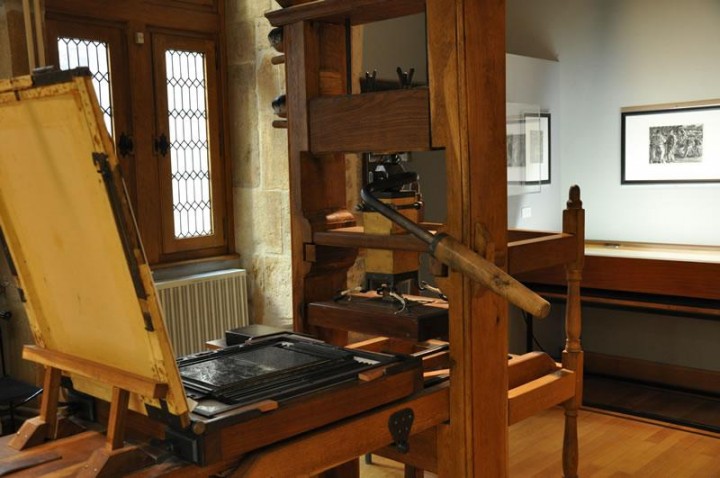I can very happily update you that I visited two more museums since my last post, and have two others on my list ... then I might be finished with nearly all of them, at least in Lyon! I wonder if I should count all those I visited and compare the number to the museums I've been to in Vienna (probably half the number I've seen here)?
This Friday morning my family and me went to the musée de l'imprimerie, the printing museum. It's very near the Opera and if you're staying somewhere near the centre, you can go there by foot. The exhibition took off with the invention of paper and other writing materials, for example parchment or papyrus. Did you know that the earliest printing press stamps were invented in Korea, and had to be inlaid in sand to make up for their different sizes? Gutenberg standardised them and also had the advantage of using the alphabet, which made typesetting much easier since you had to have only 26 characters. Each of those stamps was made out of lead from a more precious iron mould. Even though there weren't as many letters, you still had to set each page by hand.
There was quite an extensive section on the early uses of print, and what struck me as funny is that during the Reformation and De/Anti/?-Reformation (you know what I'm talking about, the one instigated by the catholic church) both sides introduced censoring after just 30 years of having free reign of what to print. This censorship lasted for almost 400 years after first being introduced, and I'm quite glad we have free press now. I really liked the section on the 19th and 20th century, as one could see what developments exactly led to the printing and graphic design we know today. Who knew that modern fonts were designed by 16th century Renaissance Italians, who in turn copied off roman script?
In the early 20th century, the hand-setting was replaced by a typing machine, but the stamps were still assigned and printed mechanically. In the latter part of that century, this changed rapidly, as two Lyonnais invented a machine that used a film roll to scan what you were typing and transmitted it to a printer-like device. Unsurprisingly, nobody was really interested in investing in their invention, so they had to go to America, where they subsequently got fame (and probably also a lot of money). The last section was on photography and graphics. Before the advent of actual printing, as every photo is made out of 3 or 4 colour-coded negatives, each one of those had to be hand-engraved into metal to allow a single print to be made! I really did not realise that all those tasks which today are just a single click away used to have whole professions dedicated to them in the past.